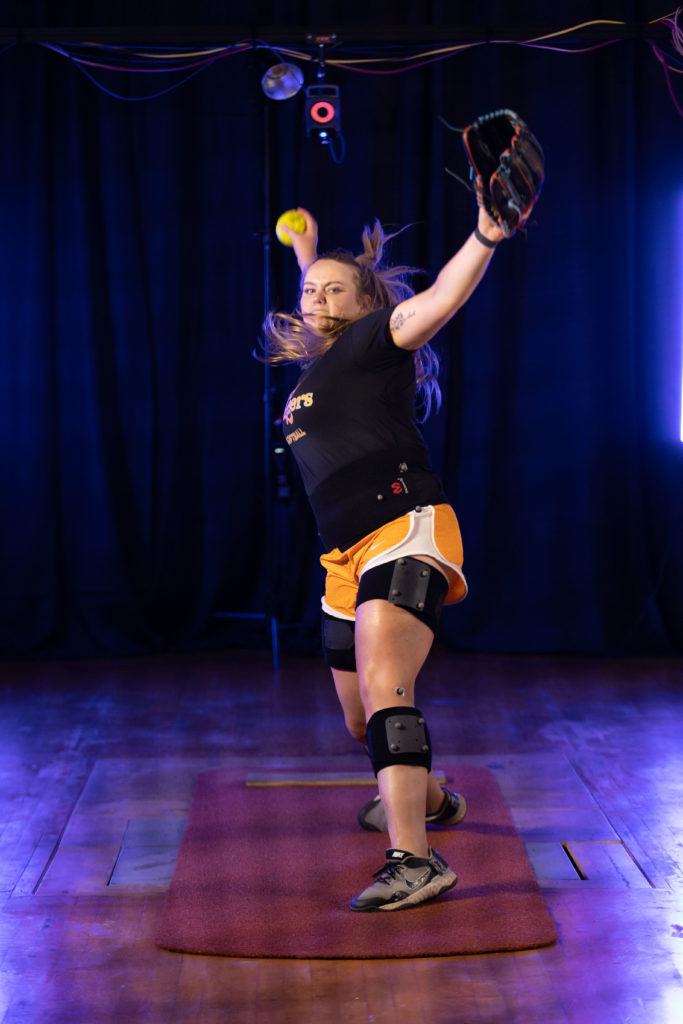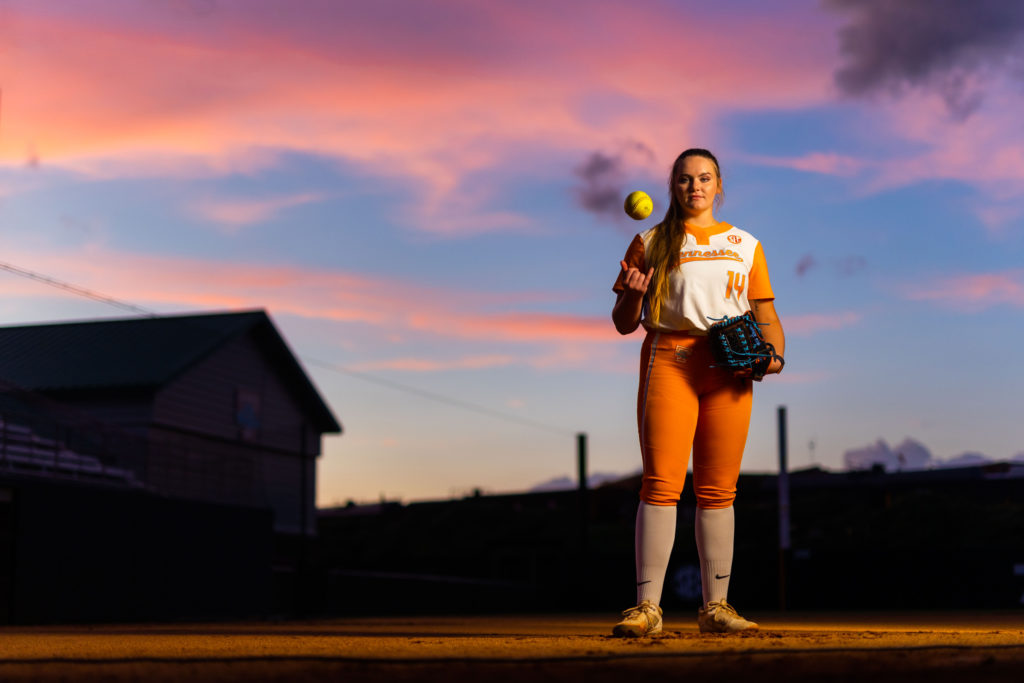When Lady Vol softball pitcher Ashley Rogers felt some back discomfort during the fall 2019 season, she didn’t think much of it. She figured it was the usual wear and tear of the game. But she ended up sidelined for the first half of the following spring season.
She had suffered another injury.
The Athens, Tennessee, native was coming off an outstanding first season, recording 209 strikeouts, a 4.98 strikeout-to-walk ratio, and a 1.94 earned run average. Her collegiate career was off to an outstanding start, but the injury brought her progress to a halt, and a few months later the COVID-19 pandemic cut her sophomore season short.

When she finally got back in the pitcher’s circle over a year later, Rogers picked up right where she left off.
In her 39 game appearances in 2021, she logged 26 wins, recorded a 1.32 ERA, ranked fifth in the NCAA in strikeouts with 296, and was third in the country in allowed hits with only 3.19 per game. There was no doubt that Rogers was back.
She saw similar success in 2022 while managing yet another injury halfway through the season.
These injuries were nothing new for Rogers. She had dealt with them for as long as she had been playing softball.
“It’s very frustrating,” she says. “You want to go out there and pitch as much as you can, but when your body hinders you from doing that it’s obviously very frustrating.”
Rogers knows she’s not the only player to be affected by recurring injuries, so when the kinesiology major started to think about the next steps in her academic career, helping others like her was a top priority.
My goal is to help the future girls of softball,”
Rogers began studying softball injuries—specifically pitching injuries—in her junior year of undergraduate work. She conducted interviews and case studies on softball injuries around the country, figuring out when injuries occurred and why. Now she is in an accelerated one-year graduate program at UT studying
biomechanics and continuing her research.
She spends most of her time in the biomechanics lab studying her own mechanics—measuring her pitches through force plates, body sensors, and cameras capturing her pitching motions. She hopes her research will help her figure out how to keep pitchers at the top of their game while avoiding injury.
“I’m trying to get some answers to my own questions and just maybe help some
people in the future,” Rogers says.
Her research is important to her not only because it can help other pitchers but also because of the lack of research on softball players and their injuries.
“Nobody really studies softball,” Rogers says. “It’s all about baseball, just because they experience such a high rate of injuries, and it’s all in one specific location for the most part.”
Rogers is a pioneer of softball research, and she’s hoping her work will lead to a change in how softball players are managed. She believes that raising awareness among trainers, coaches, and even players themselves could lead to fewer injuries.
“We as competitors don’t want to be taken out—we want to stay in even if we are in pain,” Rogers says. “We just go until we physically can’t anymore. That competitive drive kind of overrides the pain we’re experiencing sometimes.”
 While her collegiate softball career is coming to a close, Rogers’s work is far from over. After completing her graduate program in the spring, she plans on attending medical school, where she will continue to help people like her.
While her collegiate softball career is coming to a close, Rogers’s work is far from over. After completing her graduate program in the spring, she plans on attending medical school, where she will continue to help people like her.
In the meantime, she has one more season to play.
“We’re so ready to go,” Rogers says. “We want to win the SEC, we want to go back to Oklahoma City—that’s our absolute main goal.”

